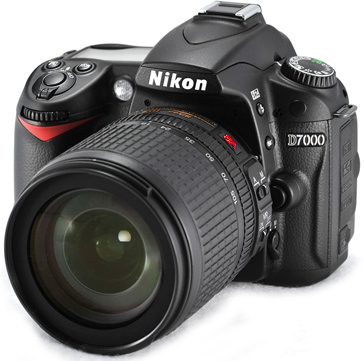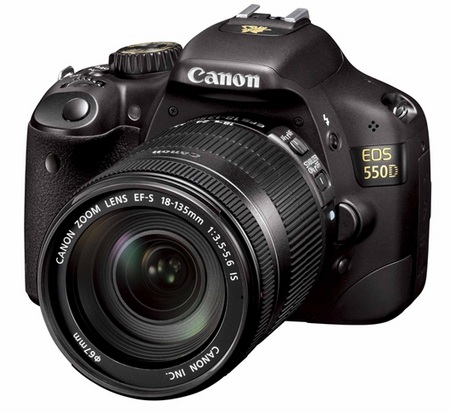Alright, let's talk specifics. On crop bodies. If your just starting out the kit 18-55 IS and 18-135mm IS are great choices. The 28-135 is good too, but I've found I need more of a wide angle than 28mm. The 50mm 1.8 is a must buy, you can find it for about 93 dollars brand new. The 55-250mm is also a good lens for the money, and it has IS and a wide zoom range. It also fits perfectly with the the 18-55mm lens.
So, if I had around 500 dollars to spend on lenses what would I get...
either the Canon 18-55mm (about 100 bundled with the camera), the 55-250 (about 190), and the 50mm 1.8 (93 dollars)
OR 18-135mm (350 dollars) and the 50mm 1.8 (93 dollars)
The choice is up to you, 18-135mm provides a lot more zoom in one lens which is nice and the image quality may be a hair above the 18-55mm and 55-250mm but they are close. The 18-250 has the benefit of a longer range split between the two lenses. These two setups should work great for shooters, but if you are finding more money available....
If I had 1000 dollars to spend on lenses, I would buy...
Canon 50mm F1.8 (93 dollars)
Tamron 17-50mm 2.8 (360 dollars)
Canon 55-250mm 4-5.6 (190 dollars)
Canon 100mm Macro 2.8 (350 used)
Tamron 17-50 is a nice fixed 2.8 aperture and is good quality. The Canon 100mm macro is supposed to be incredible image quality, has a nice 2.8 aperture as well, and does some great close up shots.
If I had 1500 dollars to spend on lenses, I would buy...
Canon 50mm F1.8 (93 dollars)
Tamron 17-50mm 2.8 (360 dollars)
Canon 70-200 F4L (630 dollars)
Canon 100mm Macro 2.8 (350 used)
The 70-200L Canon lenses are regarded as the best zoom lenses around. The image quality is superb, as well as the build quality. It seems in the zoom range there are 3 decent options...the 55-250mm F4-5.6 IS, the 70-300mm 4.5-5.6 IS, and the 70-200L (priced at 190, 470, and 630 respectively). The 70-300 is a decent option if you really want image stabilization and more of a zoom, but the 70-200 has better image quality and a lower F number. If you can afford it, the 70-200L is my most used lens...if not I would recommend the 55-250mm.
If I had 2000 dollars to spend on lenses, I would buy
50mm F1.4 (350 dollars)
Tamron 17-50mm (350 dollars)
70-200mm F/4L (630 dollars)
35mm F2.0 (260 dollars)
and Canon 100mm Macro (350 dollars)
The extra stop of light and build quality of the 50mm 1.4 can be worth it if you can afford the price difference...the 35mm F2.0 is also a great buy, and a really nice focal range to have. If you shoot less zoom and more of a "normal" field of view, you might want to consider adding this one even if you only have 1000 dollars to spend.
OK, I'll now break up the if I had pattern and talk more specific lens details for full frame bodies,
if you're on full frame, the kit 18-55, 18-135mm and Tamron 17-50mm aren't going to work with a full frame camera. All of the others I mentioned will. I would stick with the 70-200 for your zoom...it rocks. As far as wider options, you've got 4 decent choices without spending a fortune. The Canon 17-40F4L, The Canon 24-105LIS, the Canon 28-135mm F3.5-5.6, and the Tamron 28-75 F2.8. The Canon 24-105 is the kit lens that comes with the 5d. It is normally about a 1000 dollar lens, but you are only paying about 750 dollars for it bundled with the 5d (it's 2200 dollars for the 5d body only). It has nice image stabilization and the F4 number should be low enough with the 5d. It's a great option for a lot of users. The 17-40mm might be best if you do a lot of wide angle work...it doesn't zoom a lot, but the image quality is great and the price is reasonable (about 700). The Tamron 28-75 is cheaper and has the 2.8 F stop if that comes in handy. Image quality might not be quite up to the 24-105 and 17-40 but it would be fairly close. The 28-135 would only be a good option if you really need the range and IS and want to save some money, the F number and image quality aren't going to be nearly as good quality.
The 24-70 F2.8 and 16-35mm F2.8 are considered really nice lenses, but the consensus of the internet is they are not worth their hefty price tags. The image quality of the 17-40mm and 24-105mm are just as good, so you are paying almost double the money just for one stop of light. I recommend you get two decent zooms but get primes for your speed across the range.
Now, let's talk primes. Depending on you shooting style, it would be nice to have a prime in the 24-35mm range, a 50mm prime, a prime in the 85-100 range, and a prime in the 135mm-200mm range.
In the 24-35mm range, if you are budget conscious you have 3 good options: the 24mm 2.8 (320), the 28mm 2.8 (195), and the 35mm 2.0 (260). I personally like the 35mm 2.0 since it's a great lens at a decent price and is great in low light. The 24mm is nice if you like more wide angle, and the 28mm is the cheapest. I think the 35mm is the most bang for your buck, but it all depends what you need.
For the 50mm it's up to you between the F1.8 and F1.4...do note that the 50mm 1.8 needs to be stopped down to about 2.8 to really be sharp. The 50mm 1.4 is probably going to be lowest light lens you have.
In the 85-100mm range there are 3 nice options as well, the 85mm 1.8 (370), the 100mm 2.0 (400), and the 100mm 2.8 macro (450). People use the 85mm a lot for portraits, it's really a great lens; all 3 of these are great options. I personally like the 100mm macro, because of the incredible image quality and the ability to use macro. I also find the 85mm 1.8 a little too close in focal length to the 50mm 1.8. If you're not going to use the close up macro though and are mainly focused on low light, the other 2 are definitely worth a look.
The 135mm 2.0 is considered to be one of the best lenses Canon makes at any price. Although the 1000 dollars might seem steep, it outperforms lenses that cost 3 times as much as it. If you can afford it, it is an outstanding lens.
The 200mm F2.8 is also considered a fantastic lens, and it is one of the cheapest L lenses. It runs about 700 bucks.
The last lens I've heard a lot about is the Tokina 11-16. This will go very wide on a crop sensor and is supposed to have incredible image quality. I've heard it also works on a full frame body at 16mm, and works great on a steadicam. It's another one to look at, I've been hearing a lot about it.
So, what are the 15 lenses I think are the most awesome under 1000 dollars
Canon 50mm 1.8 (93)
55-250mm 4-5.6 (190)
Canon 35mm 2.0 (260)
Canon 24mm 2.8 (320)
Tamron 17-50mm 2.8 (350)
Canon 85mm 1.8 (370)
Tamron 28-75mm (400)
Canon 100mm Macro 2.8 (450)
Tokina 11-16mm 2.8 (600)
Canon 70-200F4L (630)
Canon 17-40mm F4L (650)
Canon 200mm 2.8 (700)
Canon 24-105F4L (970)
Canon 135mm 2.0 (1000)
Canon 70-200F4L IS(1000)
Questions, concerns, advice, post me a comment!




 60D:
60D:
 http://www.google.com/imgres?imgurl=http://www.dv.com/uploadedimages/DV101-SensorSizeChart_2.gif&imgrefurl=http://www.dv.com/article/90592&usg=__RXrC5TpPu_l94GM3Zc0cXiDgXFg=&h=740&w=864&sz=83&hl=en&start=2&zoom=1&tbnid=_hAowQoOhnVbqM:&tbnh=124&tbnw=145&prev=/images%3Fq%3Ddslr%2Bsensor%2Bsize%2Bchart%26um%3D1%26hl%3Den%26client%3Dsafari%26sa%3DN%26rls%3Den%26biw%3D1139%26bih%3D680%26tbs%3Disch:1&um=1&itbs=1
http://www.google.com/imgres?imgurl=http://www.dv.com/uploadedimages/DV101-SensorSizeChart_2.gif&imgrefurl=http://www.dv.com/article/90592&usg=__RXrC5TpPu_l94GM3Zc0cXiDgXFg=&h=740&w=864&sz=83&hl=en&start=2&zoom=1&tbnid=_hAowQoOhnVbqM:&tbnh=124&tbnw=145&prev=/images%3Fq%3Ddslr%2Bsensor%2Bsize%2Bchart%26um%3D1%26hl%3Den%26client%3Dsafari%26sa%3DN%26rls%3Den%26biw%3D1139%26bih%3D680%26tbs%3Disch:1&um=1&itbs=1